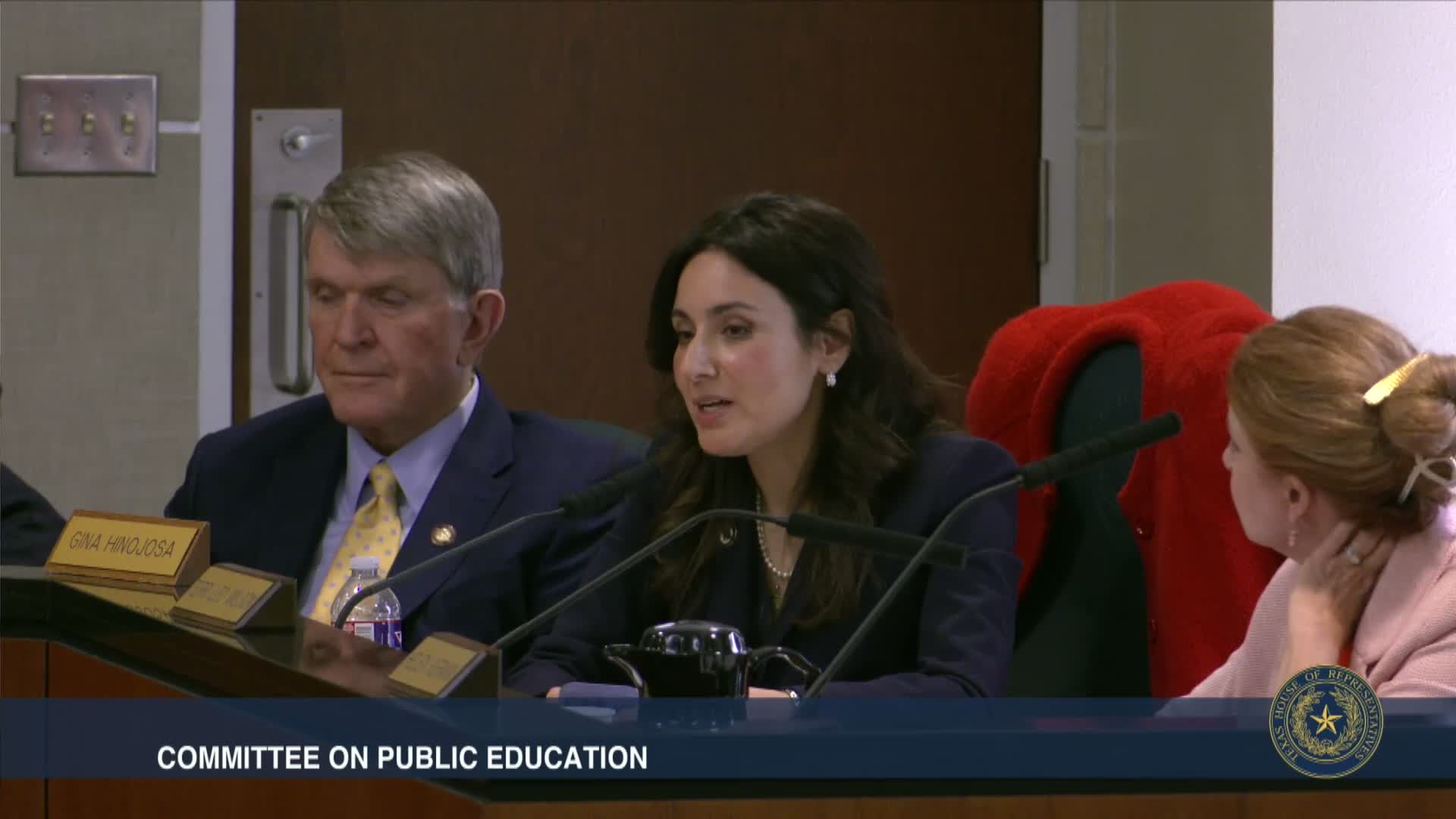Texas educators address class size challenges and teacher retention strategies
February 25, 2025 | Committee on Public Education, HOUSE OF REPRESENTATIVES, Legislative, Texas
This article was created by AI summarizing key points discussed. AI makes mistakes, so for full details and context, please refer to the video of the full meeting. Please report any errors so we can fix them. Report an error »

The Texas State Legislature convened on February 25, 2025, to address pressing issues in public education, with a focus on class sizes, teacher retention, and funding strategies. Lawmakers and education officials discussed the challenges faced by educators, particularly the impact of large class sizes on teaching effectiveness and student learning.
A recurring theme in the meeting was the concern over class sizes, with educators sharing personal experiences of overcrowded classrooms. One lawmaker highlighted the struggles faced by teachers in Austin ISD, where students often encounter larger class sizes and diverse challenges. The discussion emphasized the need for transparency regarding class size waivers, particularly for districts of innovation that may not be reporting their numbers accurately.
Officials presented data indicating that while the state has more teachers than ever, the student-to-teacher ratio remains a significant issue. They noted that rural schools tend to have lower ratios due to smaller student populations, which can lead to salary disparities compared to larger urban districts. This disparity raises questions about the equitable distribution of resources and the overall quality of education across different regions.
The meeting also touched on the complexity of scheduling and resource allocation within schools. It was noted that class sizes can vary dramatically within the same school, depending on master scheduling decisions. This inconsistency can affect the quality of education and the experiences of both teachers and students.
A key recommendation from the teacher vacancy task force was to provide technical assistance to school districts in analyzing alternative scheduling approaches. This could help districts learn from successful models and improve their own practices.
Funding was another critical topic, with discussions highlighting that while financial resources are essential, how those funds are utilized is equally important. National studies were referenced, indicating that increased funding correlates with improved learning outcomes, but the effectiveness of spending strategies can vary widely.
The meeting concluded with a call for a comprehensive approach to education funding that not only increases financial support but also focuses on effective allocation to enhance teacher retention and student achievement. Lawmakers expressed a commitment to exploring innovative solutions to improve the educational landscape in Texas, recognizing the need for ongoing collaboration and data-driven decision-making.
A recurring theme in the meeting was the concern over class sizes, with educators sharing personal experiences of overcrowded classrooms. One lawmaker highlighted the struggles faced by teachers in Austin ISD, where students often encounter larger class sizes and diverse challenges. The discussion emphasized the need for transparency regarding class size waivers, particularly for districts of innovation that may not be reporting their numbers accurately.
Officials presented data indicating that while the state has more teachers than ever, the student-to-teacher ratio remains a significant issue. They noted that rural schools tend to have lower ratios due to smaller student populations, which can lead to salary disparities compared to larger urban districts. This disparity raises questions about the equitable distribution of resources and the overall quality of education across different regions.
The meeting also touched on the complexity of scheduling and resource allocation within schools. It was noted that class sizes can vary dramatically within the same school, depending on master scheduling decisions. This inconsistency can affect the quality of education and the experiences of both teachers and students.
A key recommendation from the teacher vacancy task force was to provide technical assistance to school districts in analyzing alternative scheduling approaches. This could help districts learn from successful models and improve their own practices.
Funding was another critical topic, with discussions highlighting that while financial resources are essential, how those funds are utilized is equally important. National studies were referenced, indicating that increased funding correlates with improved learning outcomes, but the effectiveness of spending strategies can vary widely.
The meeting concluded with a call for a comprehensive approach to education funding that not only increases financial support but also focuses on effective allocation to enhance teacher retention and student achievement. Lawmakers expressed a commitment to exploring innovative solutions to improve the educational landscape in Texas, recognizing the need for ongoing collaboration and data-driven decision-making.
View full meeting
This article is based on a recent meeting—watch the full video and explore the complete transcript for deeper insights into the discussion.
View full meeting
